Petunias Will Die Back At The First Sign Of Frost – Here’s How To Help Them Survive Winter

ANNUALS > PETUNIA > OVERWINTERING
Reviewed By COLIN SKELLY

Colin is a Horticulturist and Horticultural Consultant with experience in a range of practical and managerial roles across heritage, commercial and public horticulture. He holds the Royal Horticultural Society’s Master of Horticulture award and has a particular interest in horticultural ecology and naturalistic planting for habitat and climate resilience.
IN THIS GUIDE
PETUNIA GUIDES
Container Growing
Deadheading
Hanging Baskets
Legginess
Overwintering
Pruning
Sowing
Surfinia
With their bright blooms, subtly inviting fragrance and long-lasting flowering season, petunias are a favourite in gardens across the country.
Unfortunately, they’re extremely sensitive to the cold, which means they’ll die back at the first sign of frost.
It is entirely possible to overwinter petunias, which may be an attractive option if you have splashed out on a more expensive hybrid or have a particularly fetching variety you don’t want to part with.
If that sounds familiar, simply follow these steps:
- Consider taking cuttings from your petunia plant and multiplying your chances of successful overwintering.
- Prune back your petunias to at least one-third of their original size.
- Dig up any ground-growing plants and pot them up ready to be placed indoors.
- Check for pests on the leaves of your petunias.
- Move to a cool, dry location with constant temperatures where your petunias can hibernate in a dormant state.
- Monitor your plants throughout winter without mollycoddling them – be careful with how much you water them.
- Revive your petunias in spring by placing them in an area with more sunlight.
That might seem like a long and confusing set of instructions for those unfamiliar with petunia care, but in actuality, overwintering petunias is not too tricky at all.
I’ve outlined each stage in more detail to help as much as possible below.
| Difficulty | Easy |
| Equipment Required | Gardening gloves, pruning shears, a cloth, isopropyl alcohol, trowel, plant pots, compost |
1) Take Cuttings To Multiply Your Chances
Although overwintering petunias isn’t rocket science, the best-laid plans often go awry.
For that reason, it’s a good idea to insure against mishaps by taking cuttings when the plant is in a healthy state.
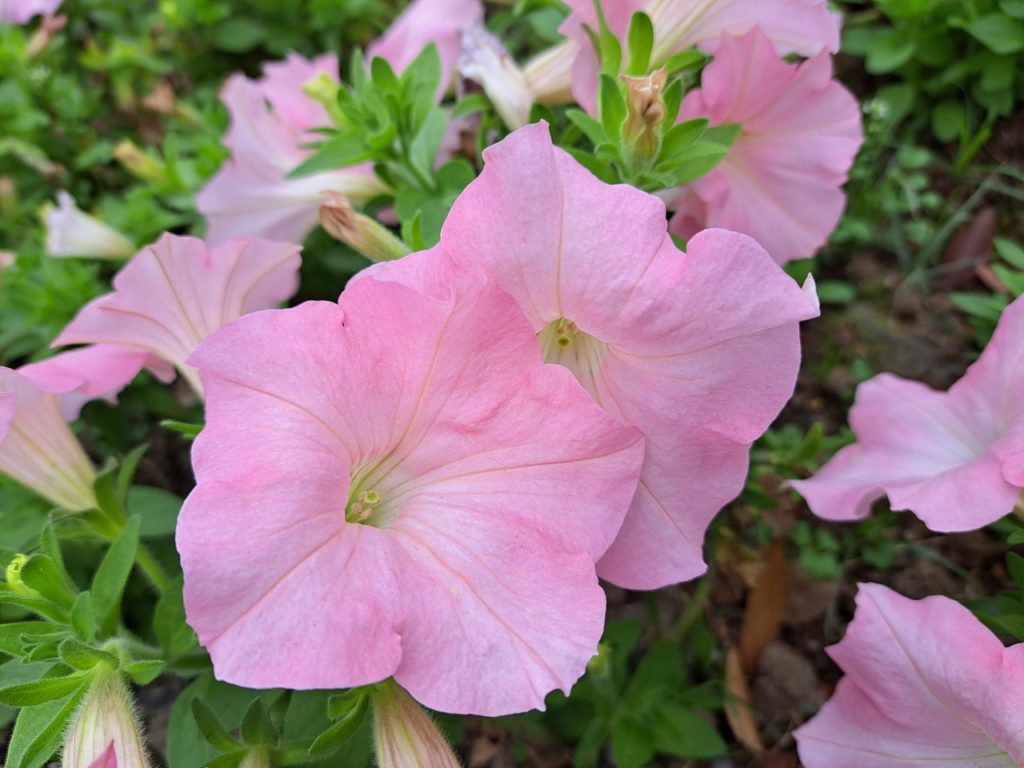
You can do so by snipping off several stems that are 15cm or more in length and then stripping away the leaves from the bottom half.
Place them into individual planters filled with compost and cultivate them indoors as you would when growing petunias from seed.
“Cuttings of Petunia (and several other half-hardy perennials) are best taken as semi-ripe cuttings,” states Master Horticulturist Colin Skelly.
“If taken as winter insurance, I’d take the cuttings in late July or early August to allow plenty of time for root development before winter. Once rooted, I’d put them into 6-9cm individual pots (depending on the size of the cuttings) using a potting mix with added grit to aid drainage when dormant.”
2) Prune Back By A Third
Petunias will die as soon as the first frost hits, so, before that happens, it’s time to take action.
Start by trimming your plant back, removing all flowers and cutting stems back by at least a third.
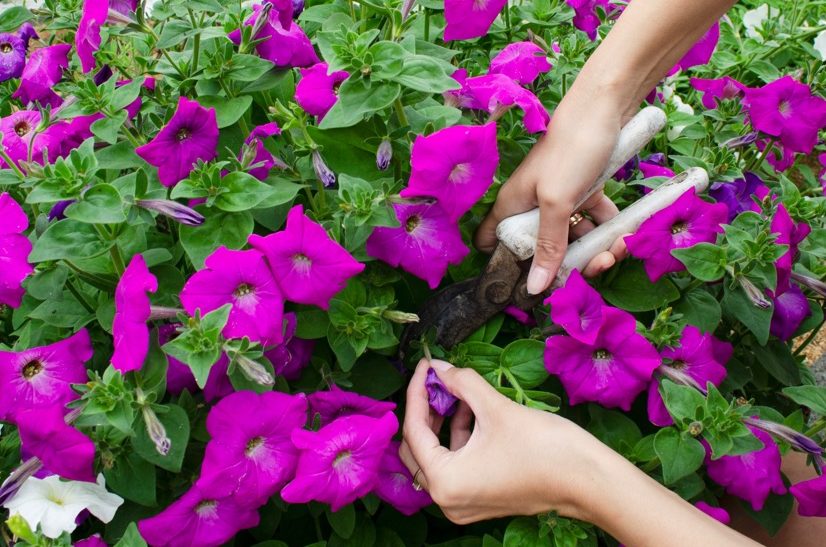
You should also stop all fertilisation at this point.
This will encourage the petunias to prepare for the winter by storing energy in their bulbs instead of promoting growth and blooms.
3) Dig Up Petunias In The Ground
Of course, if your petunias are potted, you can safely ignore this step, since they can simply be moved to a more hospitable location.
However, if they’re planted in the garden, you’ll need to dig them up.
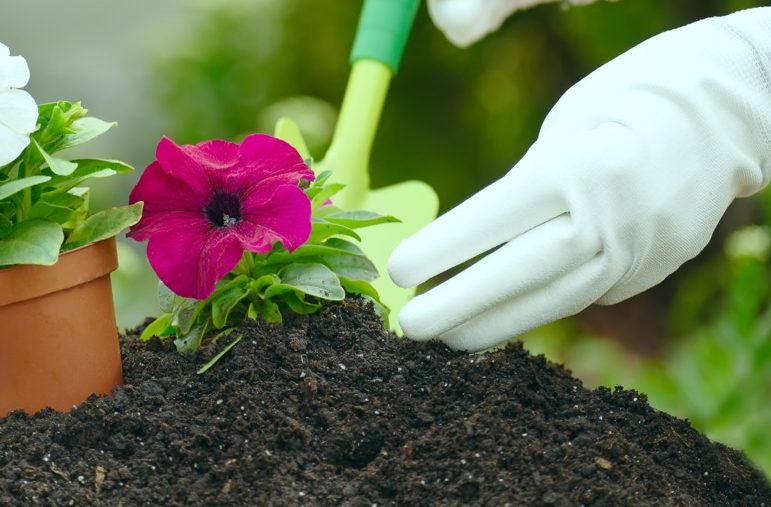
Gently do so, taking care not to damage or overly disturb the root systems.
Wash or wipe away excess soil from the bulbs and separate them out.
4) Check For Pests
It’s absolutely vital that you check for a pest infestation at this stage, since bringing them into your home could endanger the health of your other plants too.
Be mindful that plants may appear pest free, but could have hidden eggs which will hatch.
Look out for webbing, droppings or eggs and take appropriate action if you spot any.
5) Wait For Dormancy
It’s now time to allow your plant hibernate for the winter months.
To do so, place it in a container large enough to fit the root ball, then fill it with fresh soil around it.
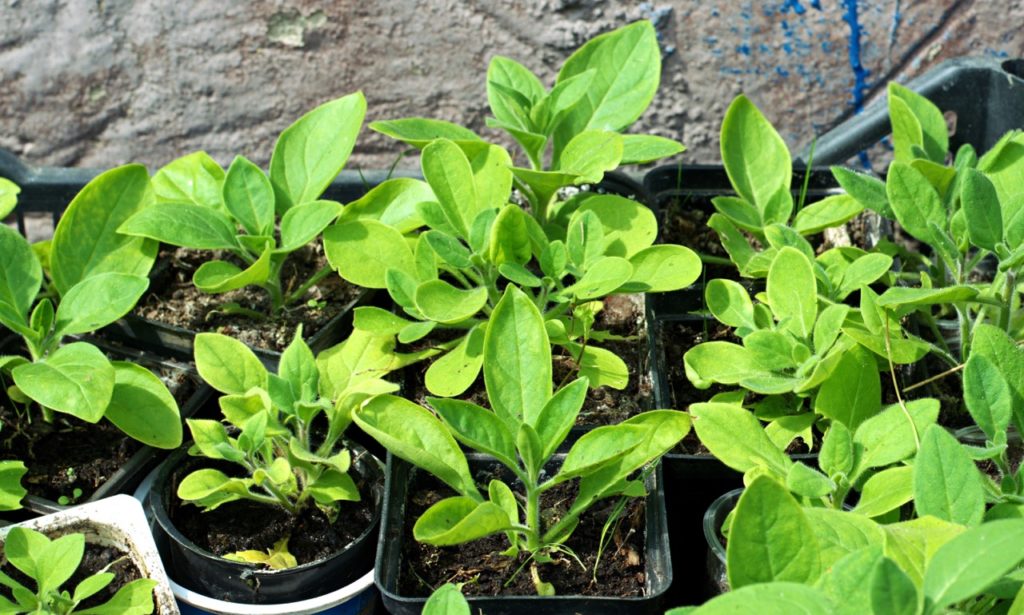
Ensure the pot has adequate drainage at the bottom.
Leave it in a cool, dry location where temperatures won’t drop near freezing point such as an unheated conservatory or greenhouse.
6) Monitor Over The Winter Months
For the most part, you can leave your dormant plant to its own devices.
However, it’s a good idea to revisit every 3-4 weeks to make sure it’s still alive, particularly in the depths of winter.
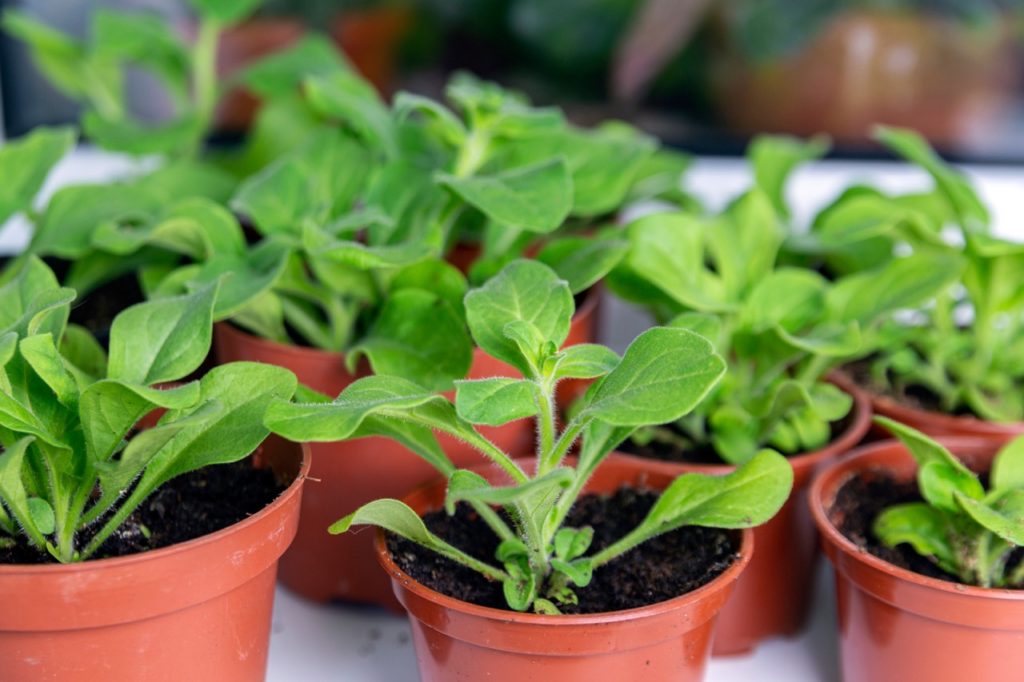
Don’t be alarmed if it loses its foliage – this is natural.
Resist the temptation to water it, since saturated soil is deadly to the root ball.
If the top few centimetres have become completely dry, you can give it a sip of water, but that’s it.
7) Revive Your Petunias In Spring
Several weeks before the final frost, you can begin the process of coaxing your petunias back to life.
Start by moving them from their dormancy location to a slightly warmer spot indoors which enjoys modest sunlight.
You can also begin to water them more frequently.
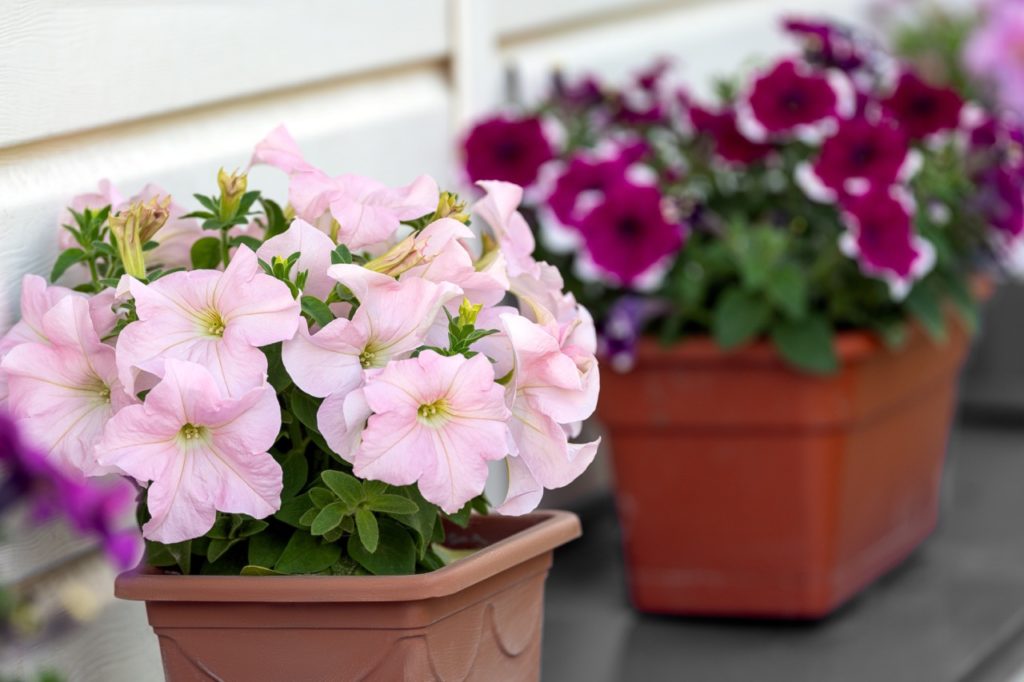
Once the plant displays new growth, you can repot them and place them on a sunny windowsill.
After the final frost has passed and your plants are well and truly established, you can transplant them outdoors and care for them as you did the year prior.

